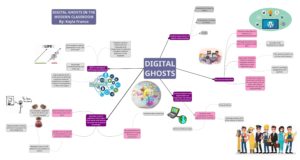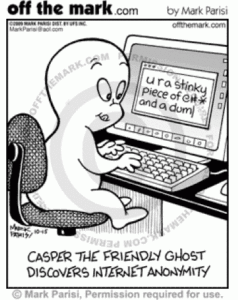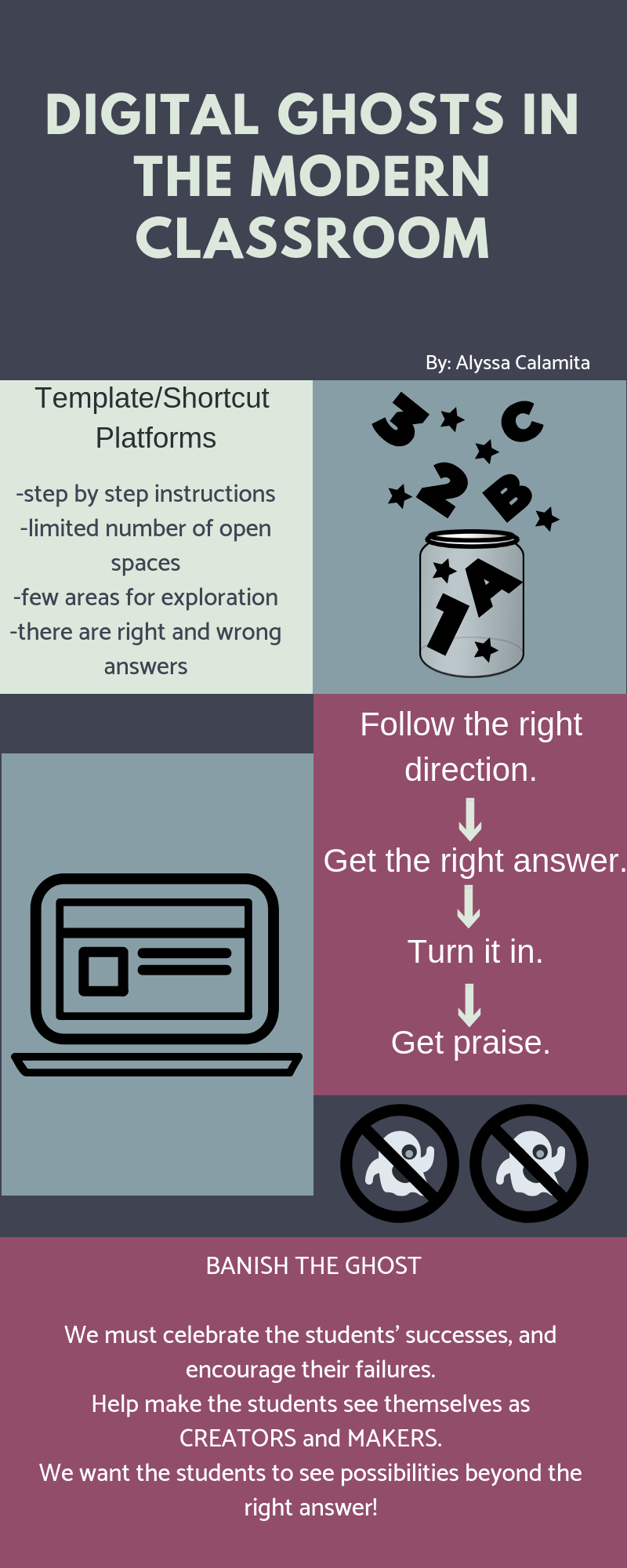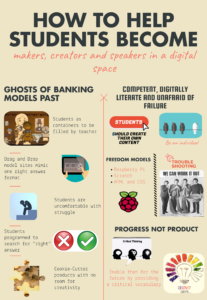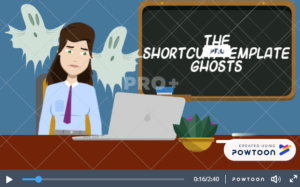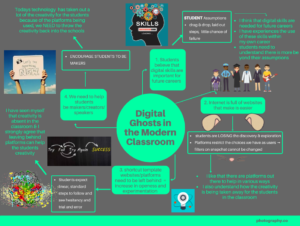I chose to do my reflection on the article “Digital Ghosts in the Modern Classroom” written by Ashley Hinck. This article talks about the modern day teacher in the digital media making classroom. She expresses her concern for the students walking into her classroom. The new generation seems to have a different sense of meaning for the idea of digital media making. Students in her classroom seem to believe that digital media making is simply a linear step by step process and that this ideology stems from the idea that is embedded into their brains due to years of following step by step instructions from their instructors. (2018) Hinck argues that there should be an importance in the digital media education to step away from template/shortcut websites such as Wix.
Personally, I am a student (like most) who strongly prefers structured step by step instructions from a professor. Whether that is my personal preference or it is embedded into my personality from years of structured instruction, that I am not sure. I see Hinck’s argument when she speaks about the importance of teaching students to become true creators of their own work, however I don’t believe we should hold the importance of coding over the importance of student imagination and creativity.
Sure, it is impressive to know that changing one letter in a line of code can change the color of a website, however i believe that time students use to memorize how to change a color could be used differently to increase a students creativity in web design. I believe coding was very important years ago, but with the advance in technology comes the advancement of convenience and productivity. As technology continues to evolve so will the convenience of template sites. Ten years ago creating a website could only be done by coding. Now we have sites that are simple enough for the everyday person to make their own websites. Who knows how much simpler web design will be in another ten years? So why focus so much on the importance of coding? Why not focus on the importance of the student vision when designing digital media? improve the imagination of the creator.
After all, I have built a website using the Wix site on my free time, regardless of having, what i would consider, very minimal computer skills. I did not do any coding work and when i first started I did not have a clue what I was doing. Within the past year and a half I have improved the site to great lengths to which I take pride in. I still feel like I have a lot to learn in ways I can improve my website but I don’t see how coding could be enough of an advantage for it to be worth the complexity and confusion. The way I see it, why bother making things complicated and confusing if ever evolving conveniences are right at our fingertips.
Check out my Powtoon and leave a comment! 🙂

